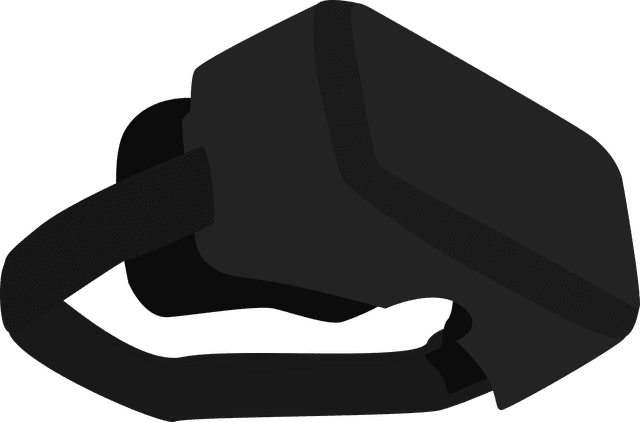Blisks located on the cold compressor side of the engine are made of titanium, while the hot turbine side requires blisks made of heat-resistant super alloys (HRSAs).
All photos credit: Sandvik Coromant
Heat-resistant super alloys (HRSAs) in aerospace engine components face extreme performance demands. What makes them incredibly durable in an engine’s high pressures and temperatures also makes them notoriously difficult to machine. It’s critical that shops know how to successfully tool up for HRSA engine components, which can cost tens of thousands of dollars each, to avoid making highly expensive mistakes.
Ensuring process security is key to a shop’s success. To achieve repeatability and high quality when machining HRSA aerospace engine components, it’s essential that shops follow some best practices. While these relate to machining HRSAs in general, each type of HRSA, engine component, and feature has its own considerations, tools, and techniques.
Work with the material properties
HRSAs are difficult to machine because they resist heat, and to machine them by shearing generates heat. When shops machine a piece of steel, the chips that come off absorb heat from the machining process. In HRSAs, the chips resist rather than absorb the heat, sending it back into tools or the workpiece. The generated heat can turn the carbide of the cutting tool into a plasticized or sintered state, and inserts can fracture; damaging a tool or, even worse, the engine component.
To protect tools and workpieces, it’s important that the process to machine HRSAs produces as little heat as possible. One way is to use tools that cut and shear HRSAs rather than push material off. Another is to not take off too much material too quickly, like burying the cutter insert deep into the material and plowing through. Instead, a series of lighter, faster cuts is more effective and produces less heat. Most computer-aided manufacturing (CAM) packages offer this trochoidal, or dynamic, technique that makes it easier for shops to apply.
Some solid carbide end mills, such as Sandvik Coromant’s CoroMill Plura Gannet, have specifically designed geometries for plunging out material on deep, narrow slots.
General HRSA cutting best practices apply to the different material bases. For aerospace engines, HRSA can be classified under two base elements with completely different cutting conditions, nickel- and titanium-based. In most cases when turning, use uncoated tools to machine titanium as it’s chemically reactive, especially at elevated temperatures. As most coatings have titanium as well as oxygen, nitrogen, and carbon, it’s possible the titanium in the coating and workpiece can react. If they do, the titanium in the workpiece can either pull the coating off the insert through adhesive wear or weld the material to the insert.
Just the opposite, nickel-based materials typically require a tool coating. They’re more difficult to machine, so surface footage per minute (sfm) needs to be about 40% to 50% slower than titanium.
Understanding how titanium and nickel HRSA bases respond to other materials can reveal additional machining benefits. While it’s becoming more of an industry standard, some shops may not know it’s possible (and advantageous) to use tools made from material other than traditional carbide to optimize roughing and finishing processes and increase productivity. For instance, shops can use ceramics to rough-machine nickel material at higher speeds. (However, never machine titanium with ceramics. It can start a fire that’s extremely difficult to extinguish). For finishing, shops can use polycrystalline diamond (PCD) for titanium and cubic boron nitride (CBN) for nickel-based material to machine at elevated speeds.
HRSAs create more forces to machine than aluminum or steel, so to save a considerable amount on setup, time, and fixturing, it’s key to have the right machine for different operations.
While it may not be possible for shops to purchase new machines all at once, consider upgrading machines that will have the biggest impact. Legacy machines, such as a vertical turning lathe, can be used for roughing the outside and, in some cases, the inside to remove rough scale on a forging or casting, so it’s smarter to invest in new machines optimized for feature-based, finishing work.
The Gannet concept is useful when tool diameter is limited and a long overhang is required.
Consider each feature’s needs
The complex components in an aerospace engine must be flawless, and fortunately there are standard aerospace engine tools and inserts available from tool companies such as Sandvik Coromant that precisely machine each groove, pocket, and slot.
One prevalent machined engine component, the turbine disc, has different types of undercuts. Optimized angled inserts can precisely machine each intricate feature. Most discs have sharp, little peaks called seal fins. Standard seal fin inserts have a built-in clearance to carefully machine those precise features. Using a seal fin insert, one can perform a technique in which the insert comes up, does a sweep, then goes back down in the opposite direction to avoid creating a burr or pushing the peak over.
If machining components with slots and pockets isn’t challenging enough, blisks come with a few more factors to consider. The blade geometry and depth, the material, and the machine all affect the programming and tools. A plunge-milling strategy can make machining narrow, deep slots quicker and more cost efficient. Some unique solid carbide end mills have specifically designed geometries for plunging out material on deep, narrow slots. A solid carbide end mill tool with a deeper reach can finish-machine those geometries all the way down.
The spool, combustion casings, and shaft are common engine components. When shops source tools to machine these components, they should look for certain portfolio features that improve process security. Optimized grades can increase reliability, resist wear, improve machining accuracy, and extend tool and insert life. Choosing tool grades is especially important for improving process security; no one wants to scrap a component because the insert failed in the middle of finishing. Optimized geometries are sharp and can withstand high edge pressures, and damped tools improve stability, process security, and component quality.
Optimized grades, such as the S205 from Sandvik Coromant, can increase reliability, resist wear, improve machining accuracy, and extend the life of tools and inserts.
Expanding knowledge
Each optimized tool has its own machining technique so it’s critical that shops partner with a specialist who can teach them. Some tool suppliers, such as Sandvik Coromant, have dedicated engineering teams to support shops and their aerospace projects, visiting shops and sharing the best ways to approach materials, features, and components, as well as making machine recommendations, selecting tools, completing CAM programming, and helping with fixturing.
Some suppliers also offer in-house machining, ideal for smaller shops with few machines and great ambition to grow. They can send a new piece of HRSA material they aren’t yet familiar with to a supplier’s machining lab that can run trials and recommend the best tools, techniques, and cutting data for it. Sandvik Coromant, for example, has its Training Center and Machining Application and Development Center in Mebane, North Carolina, near Raleigh-Durham, specifically for customer testing and education.
When seeking out a specialist, choose one that offers a comprehensive aerospace portfolio. This secures quick access to the tools and techniques specific to their needs and operations, from roughing to finishing, or from a full component to a specific feature.
For turbine blisks that require high-feed side milling, small radial engagement allows for increased cutting speed, feed, and cutting depth due to decreased heat, chip thickness, and radial forces.
Ensure process security
As aerospace machining research and development (R&D) efforts advance and more optimized tools become available, new best practices and techniques will emerge, making more projects possible for shops of all abilities and all sizes.
Machining aerospace engine components isn’t a one-size-fits-all approach. There’s an opportunity to carefully consider every detail, from base material, to component, feature, process, and individual tool. Each opportunity contains decisions that can improve process security and improve a shop’s productivity and the quality of the engine components it can offer.
Sandvik Coromant



